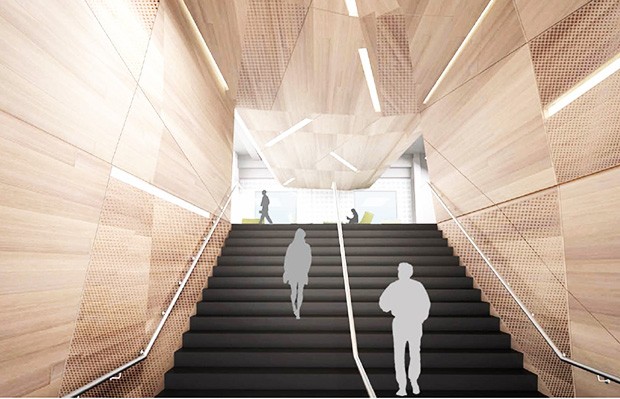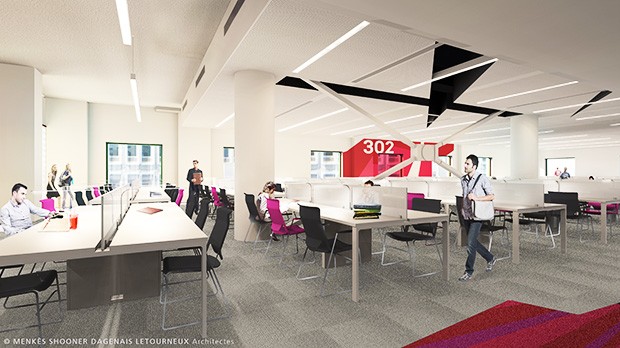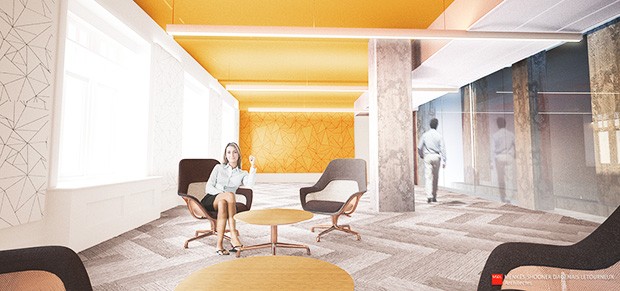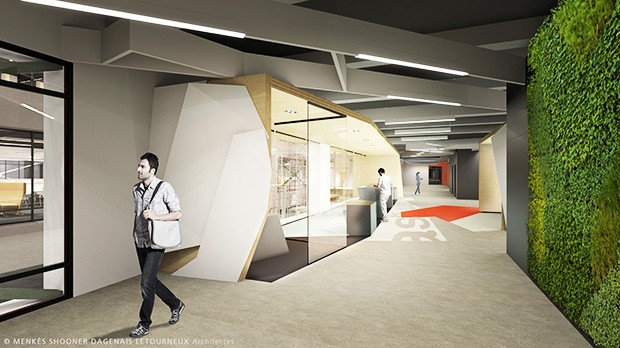Concordia’s next-generation Webster Library
 The Webster Library Transformation Project aims to create “an intellectually inspiring space.” | Images courtesy of Menkès Shooner Dagenais LeTourneux Architectes
The Webster Library Transformation Project aims to create “an intellectually inspiring space.” | Images courtesy of Menkès Shooner Dagenais LeTourneux Architectes
This January sees the launch of a three-year project to dramatically transform Concordia’s R. Howard Webster Library. The renovations offer a variety of new study spaces, more natural light, less noise and exciting new technology.
“We are creating a next-generation library that provides space for active and collaborative learning,” says Guylaine Beaudry, university librarian. “Students will be able to undertake intensive study and research, and take command of their academic experience.”
Benoit-Antoine Bacon, provost and vice-president of Academic Affairs, concurs.
“To continue to attract and retain top students, faculty and research talent, we need a library that answers their evolving needs”, he says. “A facility that provides access to expansive collections, up-to-date functionality and technology, and a variety of quality study spaces is key to ensuring a strong culture of research and innovation.”

When the Webster Library opened in 1992, 16,000 students were enrolled at Concordia. Today, that number has nearly tripled and the library, which is located in the J.W. McConnell Building (LB) on the Sir George Williams Campus, receives an average of 1.8 million visitors a year.
In 2010 and 2013, students noted in two university-wide surveys on library spaces, services and collections that they require more quality study spaces. Beaudry says the Webster Library Transformation Project is going to answer this need.
“We want to make the library an intellectually inspiring place. Students will have more study seats, more open spaces and natural light, rooms to practice presentations, and more quiet.”
The project will considerably increase square footage for studying, and the number of actual study seats will more than double.

Furthermore, the plan includes 11 different types of study areas — everything from dedicated zones for graduate students to zero-noise rooms and collaborative spaces equipped with the latest learning technologies. The construction and furniture are also enviromentally friendly, meaning all the materials used will meet strict chemical emission limits.
Students’ reliance on new information technology has increased dramatically over the past two decades, and Beaudry insists that the library must respond by upgrading its offerings. “We have to provide our students with the best possible digital-learning and interactive environments to meet their educational objectives,” she says.
Included in the project are plans for a “technology sandbox” that will allow students to experiment with some of the latest digital tools, including 3D printers.
Bacon says the Webster Library Transformation Project is a key academic priority: along with the Vanier Library (VL) on the Loyola Campus and the Grey Nuns Reading Room and 14 dedicated group study spaces (GN) at Sir George Williams, it plays an essential role in supporting the university’s learning and research activities.

“The library is a cornerstone for intellectual life at Concordia,” he says.
The project begins this month at the eastern end of the library’s third floor (LB3 East). Between January and July 2015, the space will be renovated to include two enclosed reading rooms and 450 new individual study spaces, including 204 seats at tables, 154 seats at carrels for silent study and 96 seats at tables equipped with desktop computers.
More than 300 students participated in recent furniture consultations, which were held from October 27 to November 14, 2014. Beaudry was delighted with the feedback and says consultations will continue to play a key role as the transformation progresses. “We want to properly inform the selection of both furniture and technologies to ensure that they respond to students’ needs.”
Follow the latest developments and provide feedback on the Webster Library Transformation Project blog. Check out plans for the transformation on the project web page.